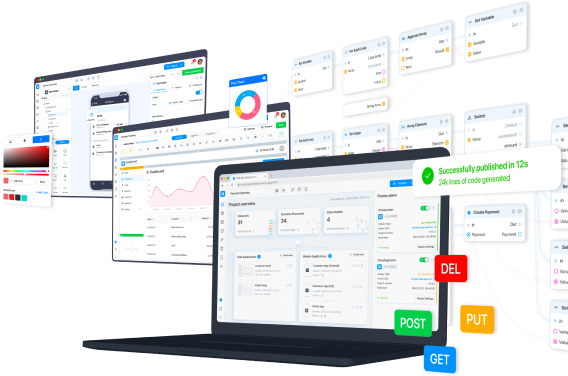Sign-Up configuration
Auth Module adds some flexibility into Sign Up configuration. Go to Modules section and click to the Auth Module to open its settings.
- SignUp Groups: defines list of groups where the user will be a member of a group after signup.
- SignUp: allows users signup and get accounts in your application.
- Session timeout (minutes): defines how long the user’s session will be active without user activity. After the timeout value the user’s session will be terminated.
- Failed login delay (in ms): defines the delay time for responses after failed login attempts to prevent bruteforce attacks.
- Email confirmation required: defines if the user has to confirm registration via email.
- Signed-Up User Active: set active=true for each newly-created User object if enabled.
- Groups tab allows to create and configure list of user groups.
Sign Up process can be configured in the web-application. Once the project is created, the following business process are preconfigured too:
- login inputString: email value validation;
- Confirm password inputString: checks if the passwords are matched;
- Register button: creates new User object and validates the registration;
Custom sign-up business process creation
- In the interface editor, create a Container and put a few Input elements in it like on the example below
- E-mail field is responsible for entering and validating the user's email [Input (email) for web applications and Email fieldfor mobile applications];
- The second input is responsible for entering and validating a new user password [Input (password) for web applications and Pass field for mobile applications];
- The third input is needed to repeat the password created by the user and check if these are matched [Input (password) for web applications and Pass field for mobile applications];
- Register button starts the business process of validating all entered values;
- Login button initiates Navigate block to the appropriate user authorization form;
- Create business process associated with the Register button. onClick event would be the entry point for this process
- First of all, logic has to be built that way so to check and validate the entered fields. Get Properties blocks are used to get data.
- The values entered by the user (Value) are passed to the input of the Server request POST /register/ process.
- Upon successful completion of the Server request POST /register/ process, the Auth Token (token) is returned from the output, which is assigned to the current user session (Set Auth Token) and the user is redirected to the desired page defined by the Navigate block.






